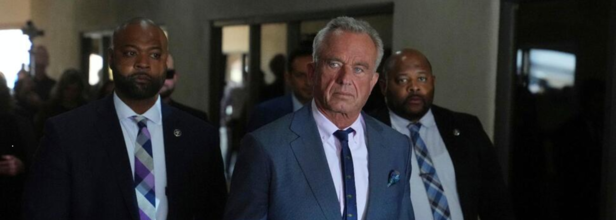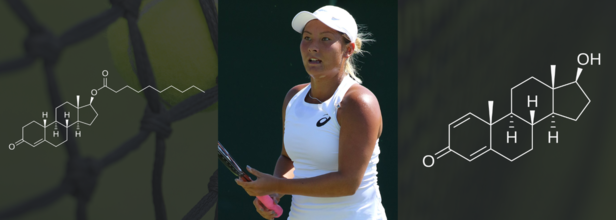- Health Conditions A-Z
- Health & Wellness
- Nutrition
- Fitness
- Health News
- Ayurveda
- Videos
- Medicine A-Z
- Parenting
- Web Stories
What Happened to ‘Healthy Tribes’? RFK Jr.’s Visit Sparks Concern Amid Cuts To Native Health Program

RFK Jr. tours the Native Health Mesa Food Distribution Center in Mesa, Ariz. (AP Photo/Ross D. Franklin)
During a recent visit to tribal communities in Arizona and New Mexico this week, US Health Secretary Robert F Kennedy Jr emphasized the importance of preventing chronic disease among the Native American and Alaska Native population. Is it targeting them? Because behind the scenes, a crucial health initiative that had long served those very communities is being dismantled. This will leave many tribal leaders alarmed and confused.
The initiative in question, Healthy Tribes, was part of the Centers for Disease Control and Prevention (CDC) and allocated $32.5 million annually to support culturally grounded programs focused on chronic disease prevention through traditional foods, medicine, and community engagement. As of early April, the program was also gutted due to workforce reductions at the CDC. Emails to tribal health organizations also confirmed that positions central to administering Healthy Tribes were in fact, being eliminated.
A Silent Rollback That Said A Lot
Kennedy’s public appearances, including a hike with the Navajo Nation president and a visit to a Native health center in Phoenix, made no mention of the program’s fate. He also moderated a panel at the Tribal Self-Governance Conference but avoided public questions. While he has said Native health is a top priority, his silence on the abrupt restructuring of Healthy Tribes has drawn criticism.
Tribal leaders now fear the rollback is part of a broader effort by the Trump administration to dismantle diversity, equity, and inclusion (DEI) initiatives. However, Native leaders have pushed back against being categorized as such, asserting that tribal support is a legal obligation under treaties and federal law—not a diversity measure.
'A Violation of Trust'
The federal government has a trust responsibility to tribal nations, which includes ensuring access to healthcare, education, and public safety. Leaders like W. Ron Allen of the Jamestown S’Klallam Tribe call the recent cuts “a violation of trust.” He said he reminded Kennedy during their private conversation that tribes are already underfunded and rely heavily on supplementary programs like Healthy Tribes.
One of the key concerns is the lack of tribal consultation—a legal requirement for federal actions affecting Native communities. Tribes were not consulted before the layoffs, echoing similar frustrations after mass terminations at the Indian Health Service earlier this year were temporarily rescinded following backlash.
What Is The Ground-Level Reality?
For tribal health facilities, these cuts have an immediate and grave implications.
For instance, in Seattle, Healthy Tribes funded GATHER. This was a program that blended traditional medicine with modern care. Plants from community gardens were also used in this treatment, and traditional healers worked alongside clinical staff. However, now, he communication with the grant administrators has been broken down.
In Los Angeles, Healthy Tribes funds youth-elder mentorship programs among Native and Alaska Native communities. The abrupt staffing changes have left administrators unclear about how or if these initiatives will at all continue.
Native leaders stress that their status is political, not racial, a key legal distinction. “We are not DEI,” said Gila River Indian Community Governor Stephen Roe Lewis, warning new federal officials against viewing tribes through a racial equity lens rather than honoring treaty-based obligations.
For now, tribal communities remain in limbo—concerned that Kennedy’s words on improving Native health aren’t matching federal actions that could ultimately set them back.
1 In 4 Indian Couples Are Overweight, Finds ICMR; How Obesity Is Now Becoming A Relationship Problem?

Credits: Canva
Obesity is no longer just a health issue, it is increasingly becoming a social phenomenon and a lifestyle disease. A recent study published in Current Developments in Nutrition, led by the Indian Council of Medical Research (ICMR) has found that 27.4% of Indian married couples share similar overweight or obese status.
Analyzing data from over 52,000 married couples across India using the National Family Health Survey (NFHS-5, 2019–21), the study points to a troubling pattern- in wealthier, urban households, especially among young couples, there is a significantly higher risk of both partners becoming overweight or obese. At its core, this research uncovers how daily habits, routines, and food choices within marriages are driving a quiet but dangerous health trend across the country.
Are Shared Habits A Risk Factor for Married Couples?
Unlike genetically linked conditions, obesity in married couples cannot be attributed to shared biology. So how does this mirroring occur? It is in environmental exposure, mutual behaviors, socio-economic context, and emotional co-regulation.
According to lead researcher Dr. Prashant Kumar Singh of ICMR’s National Institute of Cancer Prevention and Research, spousal similarities in health outcomes ranging from obesity and hypertension to smoking and sedentary behavior stem from shared lifestyles. These include eating patterns, physical activity (or lack thereof), screen time, media consumption, and stress management. Over time, habits converge especially in nuclear families with fewer social checks and less structured meal routines.
The study found that urban couples had a 38.4% concordance rate, significantly higher than rural couples (22.1%). Among the wealthiest households, this figure jumped to 47.6%, compared to only 10.2% in the poorest.
Where Obesity in Couples Is Rising Fastest In India?
Geographic disparities highlight how development and affluence correlate with rising obesity. States and territories with the highest spousal obesity concordance include:
- Kerala (51.3%)
- Jammu & Kashmir (48.5%)
- Manipur (47.9%)
- Delhi (47.1%)
- Goa (45.0%)
- Tamil Nadu (42.7%)
- Punjab (42.5%)
By contrast, states in eastern and northeastern India—where economic development is slower—showed much lower concordance rates, typically ranging from 19% to 22%.
“These figures underscore India’s uneven nutrition transition,” explains Dr. Shalini Singh, senior co-author of the study. “In wealthier regions, processed food consumption and reduced physical activity are becoming the norm. Marriage and cohabitation intensify these shared exposures, turning households into hotbeds of metabolic dysfunction.”
Is This A Disturbing Trend Among Under-30 Couples?
Perhaps the most concerning revelation is the early onset of weight gain in young couples. The study shows particularly high obesity concordance in couples under the age of 30, especially in Kerala (42.8%), Goa (37%), Jammu & Kashmir (31.6%), and Tamil Nadu (29.6%).
“This trend is alarming because early obesity increases the lifetime risk of chronic conditions like type 2 diabetes, cardiovascular disease, PCOS, and metabolic syndrome,” says Dr. Singh. “We’re seeing the impact of lifestyle-driven diseases unfold during what should be the most productive and healthiest years of life.”
The study also examined behavioral patterns that reinforce spousal weight concordance. For instance, 32.8% of couples reported regular television watching, while 39.6% reported newspaper reading, both indicative of sedentary behavior. Dependence on processed and ultra-processed food, especially in nuclear households, was another major contributor.
Interestingly, couples with similar education levels (about 45.2%) showed higher obesity concordance (31.4%), likely due to aligned food preferences, media consumption, and leisure routines.
The type of family structure also mattered. Nuclear families had a 28.9% concordance rate, higher than the 25.9% seen in joint families, where shared responsibilities and traditional food habits often foster more physical activity and balanced meals.
This Indian data fits into a much broader global trend. According to the World Obesity Atlas 2022, over 2.5 billion adults (43% of the global population) were overweight, and 890 million (16%) were obese. The burden of obesity now surpasses many infectious diseases and contributes to over 160 million years of healthy life lost annually due to comorbidities like heart disease, stroke, sleep apnea, and several cancers.
In India alone, obesity rates among adults are expected to climb significantly by 2040—27.4% of women and 30.5% of men, up from roughly 24% in 2021. If the patterns observed in married couples hold, these numbers could surge even faster than projected.
The study calls for a paradigm shift in how health interventions are designed. Rather than focusing on individuals, researchers urge a couple-based or household-level approach that takes into account the social dynamics of behavior change.
“Obesity is socially transmissible,” Dr. Singh emphasizes. “So the solution must also be social. Targeted public health messaging, fitness programs designed for couples, dietary counseling for families, and insurance incentives for preventive care at the household level are the need of the hour.”
Additionally, there’s a need to engage urban, affluent, and media-exposed demographics—who are often the earliest adopters of fast food, sedentary habits, and digital lifestyles—with interventions that feel relevant, aspirational, and sustainable.
As global health systems grapple with the rising burden of noncommunicable diseases, the Indian study offers a crucial insight: marriage can amplify risk—but also holds the key to prevention. By targeting couples early and acknowledging the influence of shared environments, public health systems can make strides in reversing obesity trends.
Veteran Actor Dheeraj Kumar Dies At 79 Due To Acute Pneumonia

Credits: Canva and Wikimedia Commons
Veteran actor and producer Dheeraj Kumar, best known for his contributions to Hindi and Punjabi cinema, passed away at a private hospital in Mumbai on Tuesday, July 15. He was 79.
Admitted with Pneumonia, Succumbed to Organ Failure
According to sources close to the family, Kumar had been admitted to the Intensive Care Unit after being diagnosed with acute pneumonia. His health took a critical turn on Monday as he suffered multiple organ failure and was subsequently placed on ventilator support. He breathed his last around 11 AM on Tuesday, with his son by his side in his final moments.
A Career That Began With a Talent Contest
Dheeraj Kumar’s journey into the world of entertainment began in the mid-1960s, when he participated in a talent contest that also featured Rajesh Khanna and Subhash Ghai. In a 2012 interview with The Hindu, Kumar recalled:
“In a talent contest in Mumbai in the 1960s, three were selected to be actors among some 10,000 aspirants — Rajesh Khanna, myself and Subhash Ghai... He became a superstar.”
Also Read: Shubhanshu Shukla Returns From ISS, What All Medical Examinations Are Lined Up
Kumar went on to act in several films, including Rakhwala, Tyaag and Sargam, and shared screen space with many leading actors of the time. Over the years, he transitioned into television production and was known for creating popular shows such as Om Namah Shivay and Shree Ganesh. His last known collaboration with Rajesh Khanna was a TV series in 2019.
Understanding Pneumonia and Its Risks
As per the American Lung Association, pneumonia is an infection that causes inflammation in the air sacs (alveoli) of one or both lungs. These air sacs may fill with fluid or pus, leading to symptoms that range from mild to life-threatening. Acute pneumonia, in particular, can cause sudden and severe respiratory symptoms.
Some of the common symptoms include:
- Persistent cough with yellow, green, or bloody mucus
- High fever, sweating and chills
- Shortness of breath and chest pain while coughing or breathing
- Fatigue, nausea or vomiting
- Confusion, especially in older adults
Kumar’s condition is a reminder that pneumonia can escalate quickly, especially in older individuals or those with weakened immune systems.
Also Read: After Jannik Sinner, Tara Moore Makes News Failing Her Doping Test, Resulting In A 4-Year Long Ban
Can Pneumonia Be Fatal?
Yes, pneumonia can be deadly—especially when left untreated or when it occurs in high-risk individuals. According to global estimates, as noted by the American Lungs Association, over 1.8 million people die from pneumonia each year, with children under five in low-income countries being the most vulnerable. In older adults, complications such as respiratory failure, sepsis, or organ failure often lead to death.
Bacterial pneumonia is more likely to require hospitalization, but viral and fungal forms can also be life-threatening. Vaccines such as the pneumococcal vaccine and flu shots can significantly reduce the risk of infection, particularly in older adults.
Maintaining overall health, timely vaccinations, and early medical intervention are critical in preventing complications.
Tara Moore Fails Doping Test, Handed 4-Year Ban—Follows Jannik Sinner in Doping Controversy Spotlight

Credits: Wikimedia Commons and Canva
After Jannik Sinner's news of anti-doping test, British tennis player Tara Moore is also making news. The 32-year-old was Britain's top ranked women's doubles player when she was provisionally banned in May 2022. Again, she has been banned for four years for a doping offence, though she had been cleared for the same by an independent tribunal just 18 months ago.
She was tested positive for nandrolone and boldenone at a tournament in the Colombian capital Bogota the previous month.
The reason Moore provided was due to the ingestion of contaminated meat. While in December 2023, an independent tribunal ruled that contaminated meat was the reason that the test came positive and Moore "bore no fault or negligence"; the International Tennis Integrity Agency (ITIA) thinks otherwise.
Also Read: Shubhanshu Shukla Returns From ISS, What All Medical Examinations Are Lined Up
ITIA has been upheld by the Court of Arbitration for Sport (Cas). In the March hearing, Cas said in a media release: "After reviewing the scientific and legal evidence, the majority of the Cas panel considered that the player did not succeed in proving that the concentration of nandrolone in her sample was consistent with the ingestion of contaminated meat."
This means Moore will not be free to play again until the start of 2028 season. "The panel concluded that Ms Moore failed to establish that the ADRV (Anti-Doping Rule Violation) was not intentional. The appeal by the ITIA is therefore upheld and the decision rendered by the Independent Tribunal is set aside."
The ITIA chief executive Karen Moorhouse told BBC,"For the ITIA, every case is considered according to the individual facts and circumstances. In this case, our independent scientific advice was that the player did not adequately explain the high level of nandrolone present in their sample. Today's ruling is consistent with this position."
What Do Nandrolone Decanoate And Boldenone Do To You?
Nandrolone Decanoate: As per a 2020 study published in journal Medicina, nandrolone decanoate is an androgen, which means it plays a significant role in the development of male reproductive organs. The study notes: "The clinical use of synthetic testosterone derivatives, such as nandrolone, is focused on maximizing the anabolic effects and minimizing the androgenic ones." The study also mentions that apart from its clinical use, skeletal muscles can be considered as the primary target tissue. "Nowadays, especially athletes in power sports such as bodybuilding and weightlifting administer illegally high doses of Anabolic Androgenic Steroids (AAS) to increase their muscle mass and improve their overall performance," notes the study.
Nandrolone Decanoate injections have been classified under the Anabolic Steroids Control Act of 1990 and due to its serious health risks, it is banned by most sports organization and is also listed in the prohibition list by the World Anti-Doping Agency (WADA).
Side Effects Include:
- Infertility
- Liver Toxicity
- Impaired Lipid Profile
- High Blood Pressure
- Acne
- Hair Loss
- Gynecomastia
Boldenone: As per a 2016 study published in the Journal of Food and Drug Analysis, this AAS can be used in repairing wasting of the body caused by some emaciating disease. It can also be used for human sports for better performance and promoting the growth of skeletal muscle.
However, this is also used for increasing the body weight in livestock as growth-promoting agents. This is also one of the matters the study looks into, in order to "evaluate the safety and meat quality criteria in broilers following intramuscular injection of boldenone." This is the reason Moore too used in her defense, that the result of her positive test was contaminated meat.
The US Anti-Doping Agency (USADA) notes that there is no therapeutic or medical use for boldenone in humans. More specifically, it is not approved by the Food and Drug Administration (FDA) for use in humans for any reason. It also notes that WADA has included boldenone in its prohibited list. Since it could occur naturally at very low concentrations in the urine, WADA-accredited laboratories apply a specific analysis procedure called carbon isotope ratio mass spectrometry, or GC/C/IRMS, to differentiate between external administration and internal production.
What are the side effects? USADA notes that in men, boldenone causes decreased testosterone production and impacts the reproductive system and fertility of males. It also impacts the size of the testes, lower sperm count, and sperm mobility.
© 2024 Bennett, Coleman & Company Limited

